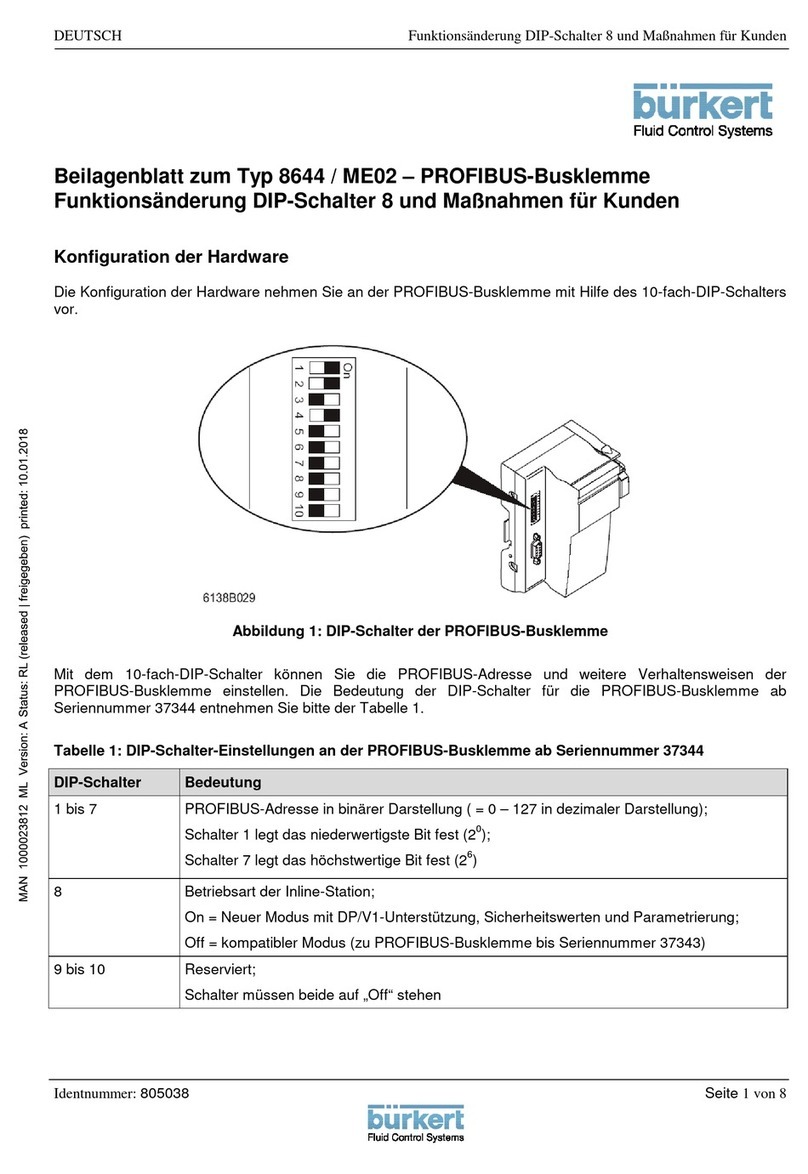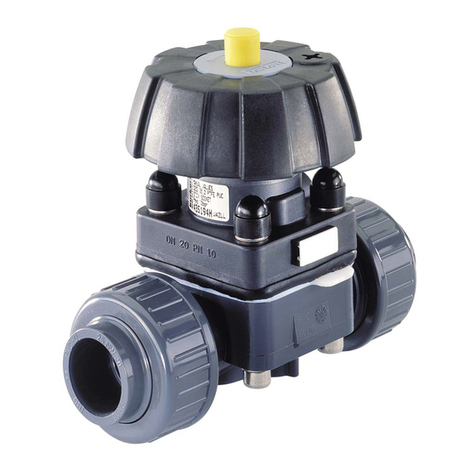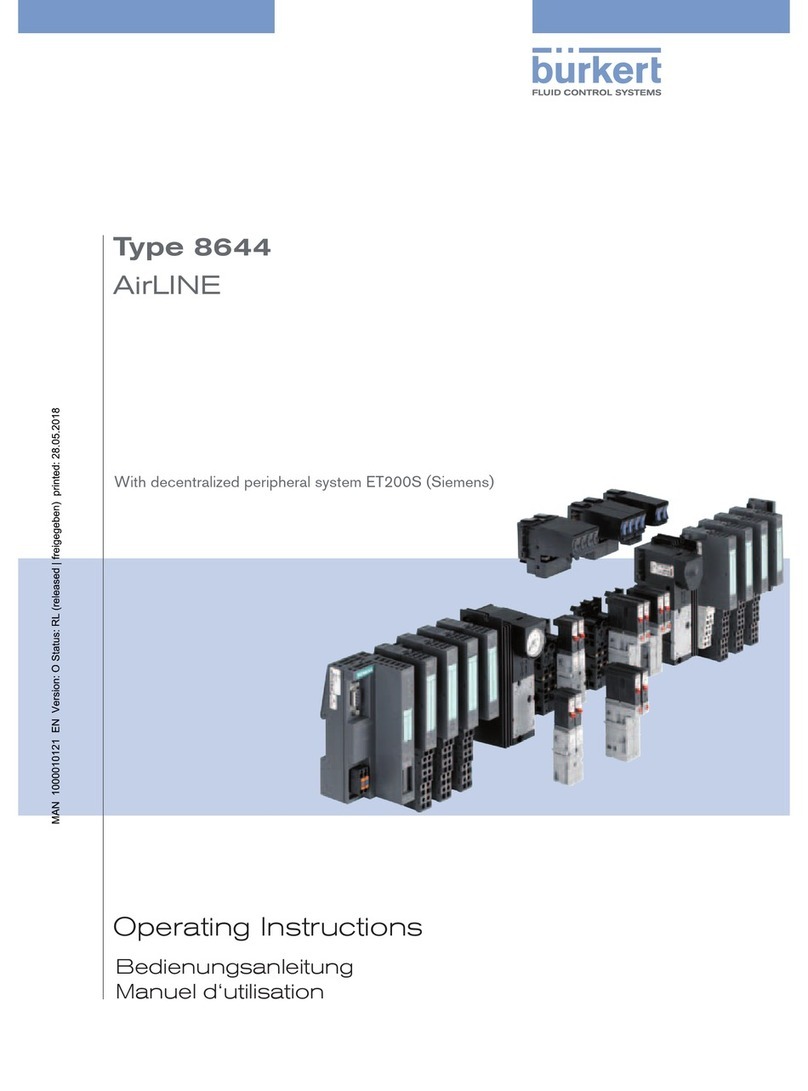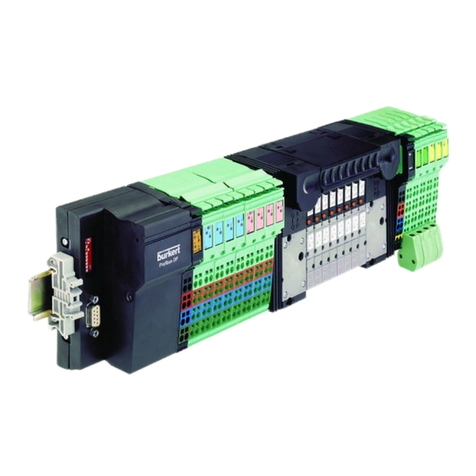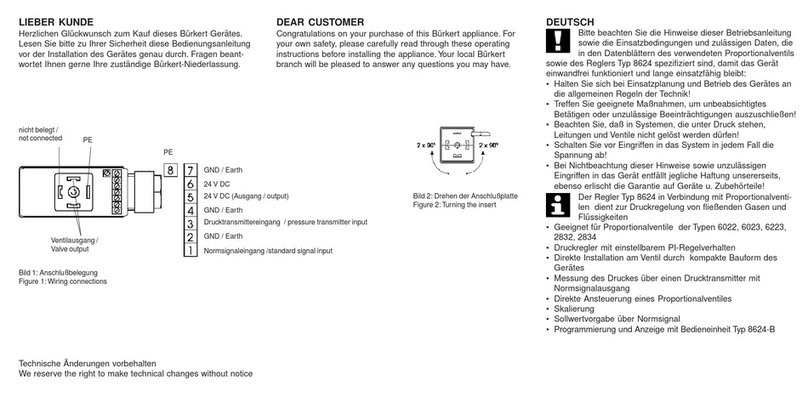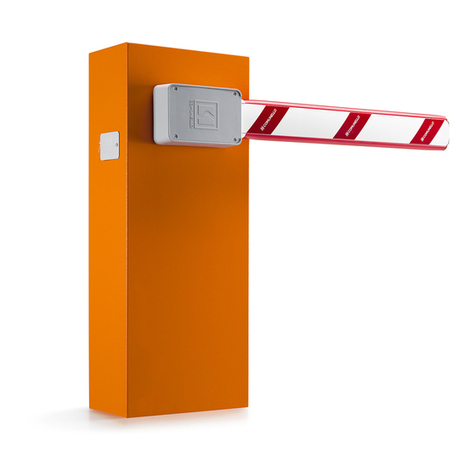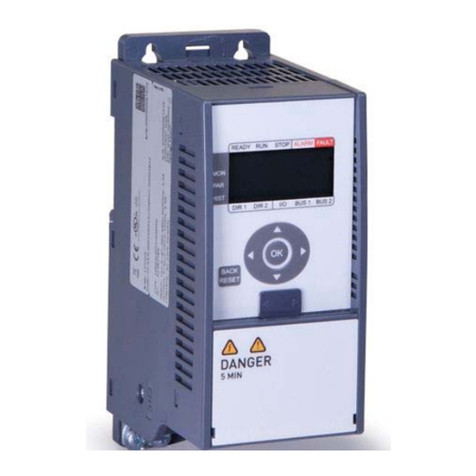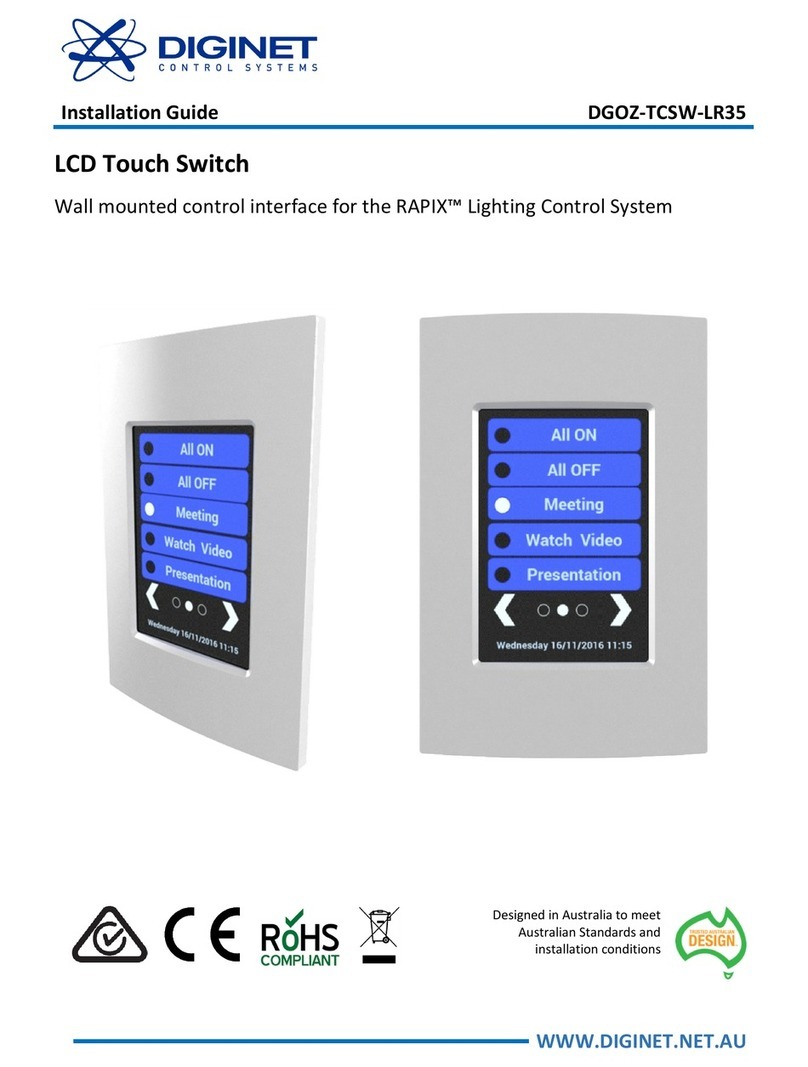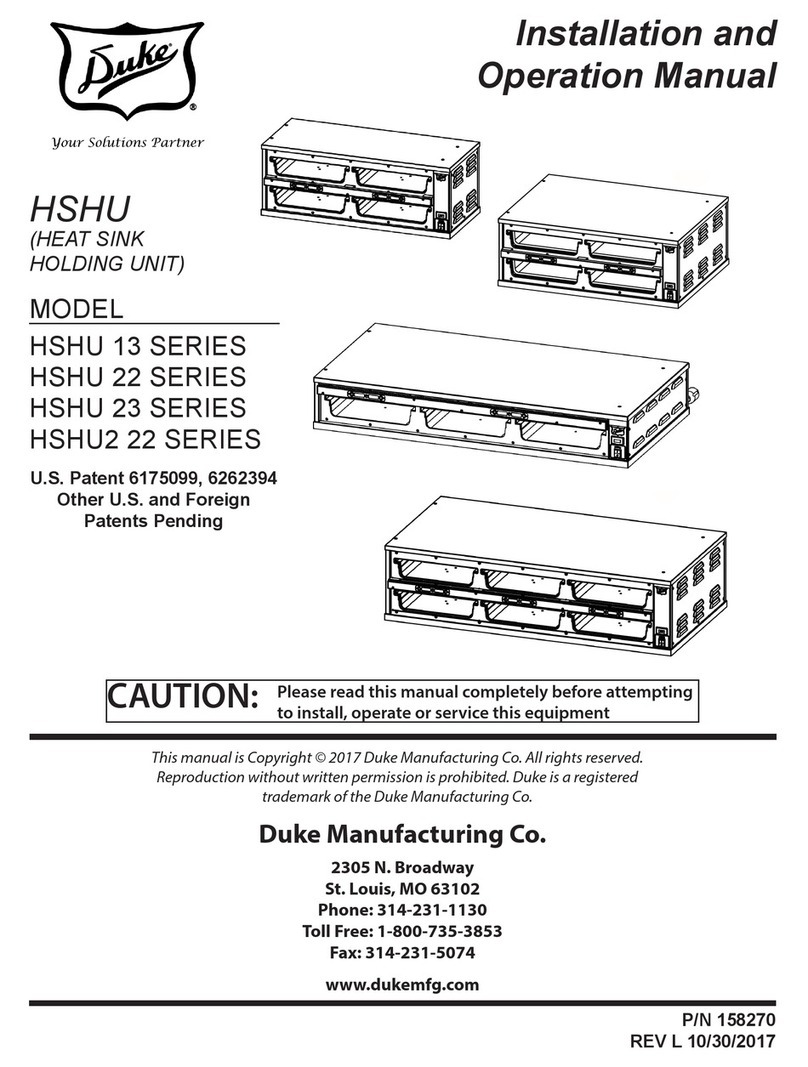
5
Intended use
2. INTENDED USE
Non-intended use of the AirLINE Type 8644 may be a hazard
to people, nearby equipment and the environment.
• The device is designed for use in an environment where there is a
risk of explosion (only Type 8644 Siemens and Wago). Pneumati-
cally operated devices may be used for control.
• Do not supply the medium connectors of the system with
aggressive or flammable media.
• Do not use the device outdoors unprotected.
• Do not physically stress the housing (e.g. by placing objects on
it or standing on it).
• Use according to the authorized data, service and operating condi-
tions specified in the contract documents and operating instruc-
tions. These are described in the chapter entitled “Technical data”.
• The device may be used only in conjunction with third-party devices
and components recommended and authorized by Bürkert.
• Correct transportation, storage, and installation, as well as care-
ful use and maintenance are essential for reliable and faultless
operation.
• Use the device only as intended.
2.1. Restrictions
If exporting the system/device, observe any existing restrictions.
3. GENERAL SAFETY INFORMATION
This safety information does not cover:
• Haphazard situations that can arise during installation, operation and
maintenance of the use.
• Locally applicable safety regulations which the operator and instal-
lation personnel are obligated to follow.
General Hazardous Situations.
To prevent injuries:
• Ensure that the system cannot be activated unintentionally.
• Note that pipes and valves must not become detached in systems
which are under pressure.
• Before reaching into the system, always switch off the power
supply.
• Design the pressure supply with the largest possible volume to
prevent a pressure drop when the system is switched on.
• Installation and maintenance work may be carried out only by
authorized technicians with the appropriate tools.
• After an interruption in the power supply or pneumatic supply,
ensure that the process is restarted in a defined or controlled
manner.
• The device may be operated only when in perfect condition and
in consideration of the operating instructions.
• The general rules of technology must be observed for application
planning and operation of the device.
english
Type 8644
